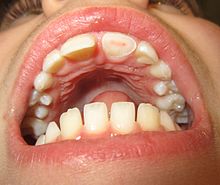Types and Characteristics of Dental Trauma
- Dental trauma refers to injury to the teeth, periodontium, and nearby soft tissues.
- There are five types of alveolar fractures, including fractures of the socket wall, dentoalveolar fractures, and fractures of the maxilla and mandible.
- Soft tissue lacerations commonly occur in the lips and gingivae.
- Trauma to primary teeth is common in young children and can lead to complications such as enamel hypoplasia and root resorption.
Prevention and Awareness of Dental Trauma
- Regular use of a gum shield during sports and high-risk activities is the most effective prevention for dental trauma.
- Compliance with regular use of mouthguards is low in high-risk populations.
- Awareness and knowledge of dental first-aid among amateur boxers is important.
- Oral and dental complications of intra-oral piercing should be considered.
Management and Treatment of Dental Trauma
- The management of dental trauma depends on the type of injury and whether it involves a baby or adult tooth.
- Splinting may be necessary to hold a loose tooth in the correct position for healing.
- Avulsed permanent teeth should be rinsed and replanted if possible, or stored in a suitable solution.
- Pulp necrosis, root resorption, and pulpal obliteration are potential complications of dental trauma.
Complications and Consequences of Dental Trauma
- Pulp necrosis is the most common complication of dental trauma, characterized by gray color and periapical inflammation.
- Root resorption can occur after traumatic dental injuries, both along the root surface and within the root canal.
- Pulpal obliteration, characterized by loss of pulpal space and yellow discoloration, may not require treatment if asymptomatic.
- Damage to successor teeth is a potential consequence of trauma to primary teeth.
Research and Studies on Dental Trauma
- Epidemiological studies have shown a high prevalence of traumatic dental injuries, especially in children and adolescents.
- Different types of traumatic dental injuries, such as fractures, luxations, and avulsions, require specific management approaches.
- Traumatic dental injuries can lead to short-term consequences such as pain and swelling, as well as long-term consequences like pulp necrosis and esthetic problems.
- Treatment options for dental trauma include bonding, veneers, crowns, repositioning, and replantation of avulsed teeth.
- Implementing preventive measures, such as the use of mouthguards, can help reduce the incidence of dental trauma.

